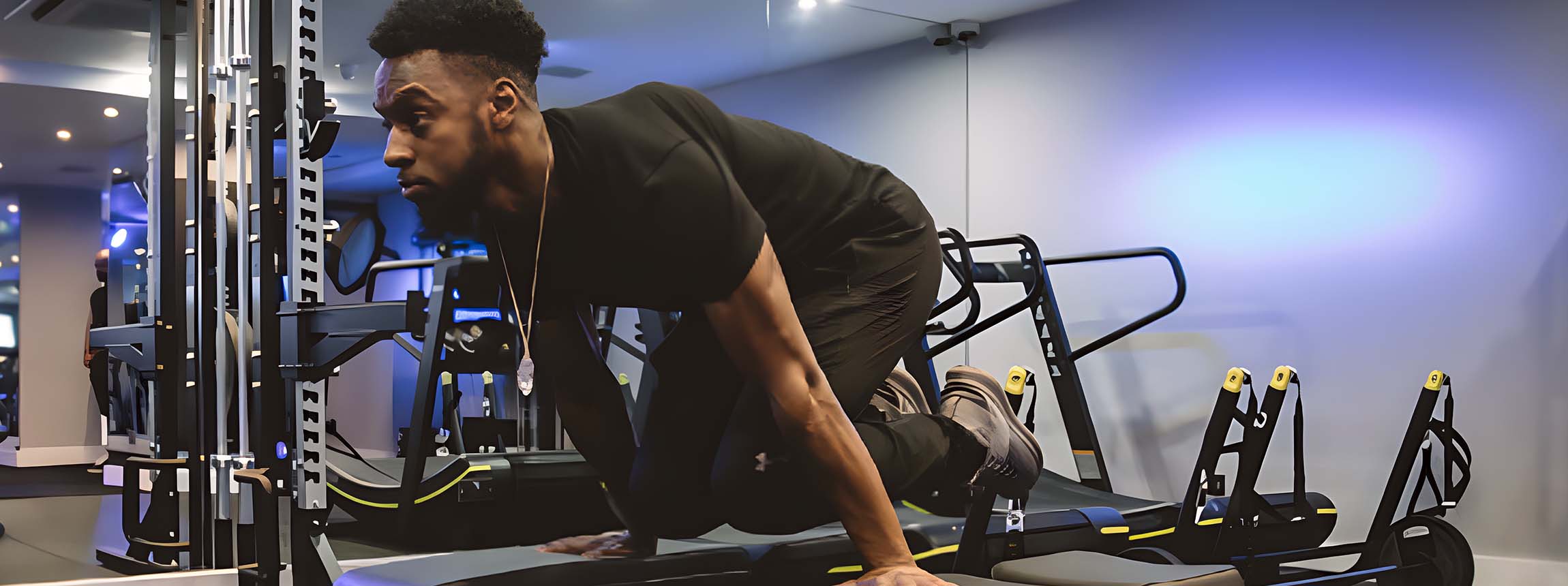In my recent conversation with Ali Malik, Personal Trainer & Founder of Fit Labs Kensington, we delved into strategies for advancing your workout routine in ways that not only build strength but also benefit you both inside and outside the gym.
Progressing exercises don’t have to be adding weight to a bar, or holding a heavier dumbbell. There are a number of ways to progress your workouts, but doing things like changing the way you hold the equipment, altering your stance or starting position, add another component to the exercise, and so more.
This means that we’re training our muscles AND our nervous systems to adapt quickly, hold awkward items of varied weights, move in all planes of motion, and to be able to react quickly.
Just think about all the movement you do to bring a bag of groceries in from the car. First, you have to bend and reach for weight that is out in front of you – If it’s a light bag, you pick it up with one arm.
Sometimes it’s stuck or in a weird position so you’ve gotta rotate or twist your body a little bit to grab it. When it’s in your hand, you ask the side of your body that isn’t holding onto additional weight to help stabilize you.
And maybe, you’re doing all of this with a child on your other hip. There’s a lot going on,and you’re probably not even aware of the movement you’re doing.
It’s maybe a tertiary focus, if it’s conscious at all. Most injuries happen outside of the gym just like this. Grabbing a bag of groceries, bending to get something on the ground… when we do things without thinking a lot about them. These are the moments we’re training for.
If you’ve trained for any sport or activity before, you may have heard the idea of “progressive overload”. It’s the most important and foundational strength and fitness principle.
Unfortunately, when you ask most fitness pros what it means, they’ll say it means to get stronger, you must increase the amount of weight you add to an exercise incrementally over time.
“While load is an aspect of progressive overload, that isn’t what the term means. Instead, progressive overload is about adding STRESS to the body that’s greater than before.”
Ten variables that make upmeans of using progressive overload:
- Load
- Volume
- Density
- Range of Motion
- Speed
- Planes of Motion
- Body Position
- Load Position
- Direction of Force
- Stability of Implement
Instead of just lifting heavier and heavier over time (usually you progress quickly in the beginning, but also plateau quickly), we can add smaller, sometimes subtler challenges to other aspects of the exercise.
That way the strength we gain over time is totally functional and multi-faceted. You have the strength itself, plus your body knows how to access it and use it to move and interact with the world around you. It’s hardwired and translates to all of your movement outside of the gym.





